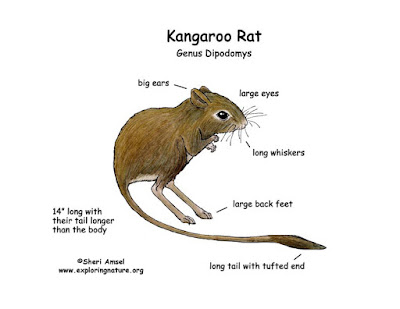Sonoma County California Tiger Salamander
 |
| Photo courtesy of Adam G. Clause |
By: Salman Al-Sulaiti
Description
The California Tiger Salamander is a large, stocky salamander with a broad, rounded snout. Adult salamanders range from 6 to 9.5 inches in length. Their coloration usually consists of random yellow markings on a black body.
The California Tiger Salamander is endemic to the Santa Rosa Plain, the San Joaquin-Sacramento River valleys and bordering foothills, and the coastal valleys of Central California south to Santa Barbara. This particular blog is about the Sonoma County DPS (Distinct Population Segment), this listing is due to the geographical isolation and genetic differences of the Sonoma population as compared to the Santa Barbara and Central DPSs.
The California Tiger Salamander is endemic to the Santa Rosa Plain, the San Joaquin-Sacramento River valleys and bordering foothills, and the coastal valleys of Central California south to Santa Barbara. This particular blog is about the Sonoma County DPS (Distinct Population Segment), this listing is due to the geographical isolation and genetic differences of the Sonoma population as compared to the Santa Barbara and Central DPSs.
 |
| Courtesy of U.S. Fish and Wildlife Service |
Geographic
Historically the range of the Sonoma California Tiger Salamander was approx. 100,000 acres, prior to human intervention of the Plain. By the mid-1990s there was an estimated loss of 80% of the vernal pool habitat on the Plain. The current range of the Sonoma County California Tiger Salamander is approximately 20,000 acres.Population
Virtually nothing is known about the historical abundance of the Sonoma County California Tiger Salamander. Its reclusive nature makes it difficult to estimate abundance. Available data suggests that most populations consist of a few to a few dozen breeding adults.
Listing Date: July 22, 2002
Listing Type: Endangered
Recovery Priority: 3C*
*"This number indicates that the DPS faces a high degree of threat and has a high potential for recovery." (U.S. Fish and Wildlife Service)
Causes of Listing
Habitat Destruction and Loss
It's estimated that 25% of the Salamander's 28,000-acre range within the plain had been converted to ranchettes, golf courses, and commercial buildings with an additional 17% converted to agricultural uses. There are 8 known remaining breeding sites, and all are threatened by urbanization.
Predation
Bullfrogs and the California Tiger Salamanders tend not to occur in the same wetlands. Dispersing bullfrogs in these habitats have eliminated some California Tiger Salamander populations due to over-predation.
Mortality from Road Crossings
It's estimated that 25% of the Salamander's 28,000-acre range within the plain had been converted to ranchettes, golf courses, and commercial buildings with an additional 17% converted to agricultural uses. There are 8 known remaining breeding sites, and all are threatened by urbanization.
Predation
Bullfrogs and the California Tiger Salamanders tend not to occur in the same wetlands. Dispersing bullfrogs in these habitats have eliminated some California Tiger Salamander populations due to over-predation.
Mortality from Road Crossings
Recovery Plan
Threats to the species habitat must be reduced by providing protection for at least 3 metapopulations within the core range of the Sonoma County California Tiger Salamander. Each of the core areas (Wright-Kelly Core Area, the Llano Crescent-Stony Point Core Area, and the West Cotati Core Area) must have sufficient aquatic and upland habitat, a minimum of 308 acres. Habitat must be contiguous and connected by habitat corridors of a minimum of 1,200 ft wide.
To limit predation, aquatic breeding habitats should be ephemeral to ensure non-native species from establishing a breeding population. New preserves will be sited to minimize predatory risk
To protect sufficient habitat to ensure that Salamander populations are buffered from contaminants.
To reduce mortality from road crossings preserves should be located at least 1 mile away from major road crossings. Also, a plan is implemented to effectively disperse Salamanders in a road-way impacted landscape.
To limit predation, aquatic breeding habitats should be ephemeral to ensure non-native species from establishing a breeding population. New preserves will be sited to minimize predatory risk
To protect sufficient habitat to ensure that Salamander populations are buffered from contaminants.
To reduce mortality from road crossings preserves should be located at least 1 mile away from major road crossings. Also, a plan is implemented to effectively disperse Salamanders in a road-way impacted landscape.
What to Do?
Awareness. Helping to raise awareness locally about the issue and bring people's attention to California Tiger Salamanders can help with their recovery plans.
Campaign. The next step after awareness is to take action through campaigning or doing volunteer work to help. For example, campaign for tunnels to be set underneath high-traffic Salamander crossing roads.
Lifestyle. Making changes to your lifestyle, like recycling and not using products with potentially harmful chemicals can help keep the Salamander's habitat better. For example, disposing of contaminants correctly so they do not pollute the ponds that Salamander's use for reproduction.
Anything. If you have a good idea on how to help protect the California Tiger Salamander then go ahead and try it! A great example is the previous video about Salamanders' mortality crossing roads, a humorous but informative video.
Campaign. The next step after awareness is to take action through campaigning or doing volunteer work to help. For example, campaign for tunnels to be set underneath high-traffic Salamander crossing roads.
Lifestyle. Making changes to your lifestyle, like recycling and not using products with potentially harmful chemicals can help keep the Salamander's habitat better. For example, disposing of contaminants correctly so they do not pollute the ponds that Salamander's use for reproduction.
Anything. If you have a good idea on how to help protect the California Tiger Salamander then go ahead and try it! A great example is the previous video about Salamanders' mortality crossing roads, a humorous but informative video.
Resources
U.S. Fish and Wildlife Service. 2016. Recovery Plan for the Santa Rosa Plain: Blennosperma bakeri(Sonoma sunshine); Lasthenia burkei(Burke’s goldfields); Limnanthes vinculans(Sebastopol meadowfoam); California Tiger Salamander SonomaCounty Distinct Population Segment (Ambystoma californiense). U.S. Fish and WildlifeService, Pacific Southwest Region, Sacramento, California.vi + 128 pp
https://ecos.fws.gov/docs/recovery_plan/06012016_Final%20Santa%20Rosa_RP_signed_1.pdf
Swenty, Sarah. “California Tiger Salamander.” Sacramento Fish and Wildlife, U.S. Fish and Wildlife Service, 17 June 2017, www.fws.gov/sacramento/es_species/Accounts/Amphibians-Reptiles/es_ca-tiger-salamander.htm.
Scully, Janene. “U.S. Fish & Wildlife Service Spells Out Ways To Save California Tiger Salamander.” Noozhawk.com Santa Barbara & Goleta Local News, Malamute Ventures LLC, 14 Dec. 2016, www.noozhawk.com/article/fish_wildlife_service_spells_out_ways_to_save_california_tiger_salamander.
https://ecos.fws.gov/docs/recovery_plan/06012016_Final%20Santa%20Rosa_RP_signed_1.pdf
Swenty, Sarah. “California Tiger Salamander.” Sacramento Fish and Wildlife, U.S. Fish and Wildlife Service, 17 June 2017, www.fws.gov/sacramento/es_species/Accounts/Amphibians-Reptiles/es_ca-tiger-salamander.htm.
Scully, Janene. “U.S. Fish & Wildlife Service Spells Out Ways To Save California Tiger Salamander.” Noozhawk.com Santa Barbara & Goleta Local News, Malamute Ventures LLC, 14 Dec. 2016, www.noozhawk.com/article/fish_wildlife_service_spells_out_ways_to_save_california_tiger_salamander.



I loved that you picked this species! I am actually from Sonoma County, and one time my dog brought one into our house. So I think it is really cool that you picked this little guy. I liked all of your information, and links to videos and images. - Karah Bengs
ReplyDeleteRanging from only "6 to 9.5 inches in length" it is surprising to me that they require so much space in order to adequately survive ("minimum of 308 acres"). I wonder what type of "buffer" specifically are they planning to make in the recovery plan section of your blog? Is it a physical barrier to keep out predators, or just a marked off area to prevent contaminates from entering the area? I liked how you drew to this point in your "What Can You Do?" section; however, I would like to know more about what types of contaminants are especially/specifically harmful to these salamanders so that I can make a more impactful difference. Then maybe having a link to a specific website or chart that easily guides your audience in disposing of these contaminants properly.
ReplyDelete-Sarah Bach
The reclusive nature of this salamander interests me. Additionally, I liked reading this because my great grandmother actually owned a home that was located on the habitat of endangered salamanders, and had to be very careful with home renovations because of it. It is sad that these species are in danger largely due to the development of commercial buildings. Overall, I liked your blog and thought it had adequate information.
ReplyDeleteYour blog was very clear and concise making it very easy to follow along with. I thought it was especially interesting how urbanization has had such a huge impact on both the geography of the salamander and the change in population size. -Haley Baquian
ReplyDeleteThis is such a well-crafted post! It’s filled with great ideas and inspiration. I recently wrote about Tadoba Safari Booking and it’s perfect for nature lovers. I’d love your thoughts on it!
ReplyDeleteI really appreciate the effort in sharing such amazing content. If you enjoy exploring wildlife destinations, I’d love for you to check out my blog on Tadoba Andhari Tiger Reserve, where I share insights on safaris, wildlife, and travel tips. Let me know what you think!
ReplyDelete